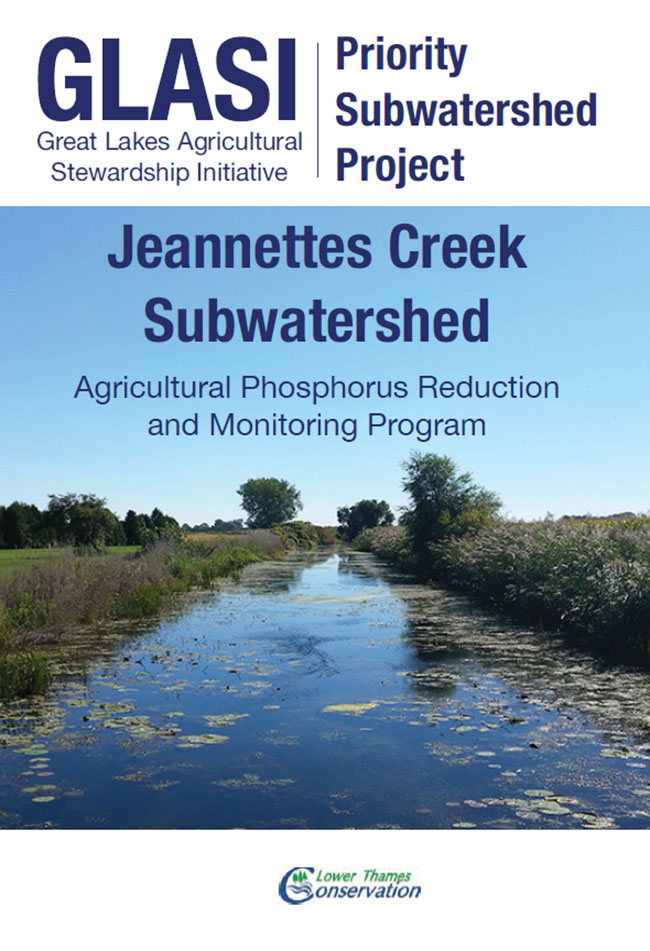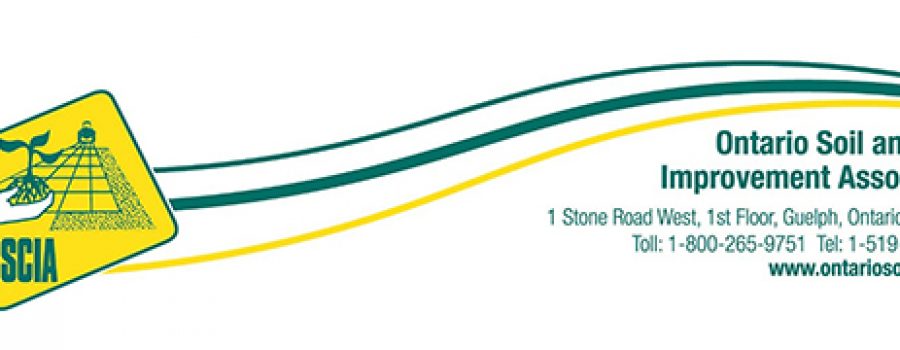By Lilian Schaer on behalf of Ontario Soil and Crop Improvement Association
Guelph, Ontario
Farmers in the Chatham-Kent area are actively participating in a special cost-share program to boost water quality in the region through changing practices on-farm.
The Lower Thames Valley Conservation Authority (LTVCA) has long been working with local farmers on implementation of Best Management Practices (BMPs) to improve the watershed’s environmental performance and improve the quality of the water flowing into Lake St. Clair and Lake Erie.
Two years ago, with the support of the Great Lakes Agricultural Stewardship Initiative (GLASI), they helped launch the Priority Subwatershed Project in the Jeannette’s Creek area, which provides up to 80 per cent cost share to a maximum of $75,000 per eligible farm business to implement specific agronomic and soil health BMPs on their land.

Through the program, LVTCA is also undertaking rigorous monitoring and verification of those BMPs to track their effectiveness.
Data from BMP implementation, from extensive surveying, and from the water quality monitoring network will be sent to the University of Guelph to model the amount of phosphorus reduction. This information will be used in a cost-benefit analysis to establish the cost of agricultural stewardship to achieve these phosphorus reductions in the subwatershed.
Eligible BMPs include cover crops, alternative phosphorus application practices, crop and field nutrient management plans, drainage and water management, buffer strips and conservation tillage.
To participate in the program, eligible landowners have to be willing to share historical land use data for their fields in the area, including crop types and yields, fertility and tillage practices, and field characteristics like drainage, tile spacing or soil sample results.
The program is limited to an 18.6 square kilometre area that was chosen with a few specific reasons in mind, according to LVTCA’s Agricultural Program Coordinator Colin Little, including a unique pump scheme drainage system that has allowed farmers to drain and farm regions that are below Lake St. Clair’s water elevation levels.
“Jeannette’s Creek is not necessarily a “priority” subwatershed in relation to its phosphorus loading levels – all tributaries in the Thames River watershed have elevated nutrient concentration levels, making the entire region a priority,” he explains. “But the hydrology of the pump schemes here is unique and nutrient processes are not well understood.”
Water only flows to the creek when the drains and reservoirs reach a threshold that requires the pump stations to operate and discharge water. These systems function differently than free flowing watercourses and the Conservation Authority has not had capacity to monitor the 95 pump stations to determine how they may be affecting phosphorus levels in the Thames River watershed. Three different pump schemes with varying soil types are now being monitored through the current program.
“Most importantly, we have farmers in this region who are willing to work with the Conservation Authority to implement and test the effectiveness of BMPs in reducing agriculturally sourced phosphorus,” Little adds.
And it has been a popular initiative with over 2,184 acres or approximately 48 per cent of the agricultural land in the catchment area having at least one BMP implemented through the program. Many farmers have undertaken multiple practices, and have adopted the 4R approach to nutrient stewardship – application at the right source, right rate, right time and right place.
“We’re seeing a lot of funding distributed for alternate ways to apply phosphorus, equipment that lets phosphorus be applied using efficient methods, as well as soil sampling and tapping into Certified Crop Advisor services to get crop and field nutrient management plans or variable rate fertilizer prescriptions written,” he says. “Last year, 40 of the 46 BMPs implemented had some relation to the 4R framework.”
Steve Gleeson cash crops no-till corn, soybean and wheat in the western part of Chatham-Kent with his brother Pat and sons Marcus and Griffin. They were already doing zone soil sampling and a variable rate fertilizer program, but were able to access additional funds through the Jeannette’s Creek project to also do a five-year crop plan for the farm they have located in the subwatershed area.
“With these tools, you’re not over-applying fertilizer where you don’t need it,” Gleeson explains. “Not only does this save on fertilizer costs, but it helps eliminate run-off and we’re hoping it will make our soil levels more consistent across the farm.”
He’s also the pump operator on two of the pumps the conservation authority is tracking through the project, so he’s particularly keen to see water sampling results when they start to become available.
For his part, Little says the big advantage to the project other than environmental benefits is the opportunity the LTVCA now has to work directly with farmers and Certified Crop Advisors, particularly farmers who may not previously had a connection with the Conservation Authority.
“This helps put us in tune with the challenges farmers face and they deserve a lot of recognition for the positive work they’re doing,” he says. “It’s been great to help farmers perform evidence-based research and we need to do more of that in the future as we begin working to reduce agriculturally sourced phosphorus across rural Ontario.”
Funding is still available for projects in 2017 – more information is available from http://www.ontariosoilcrop.org/oscia-programs/glasi/priority-subwatershed-project/.
GLASI is funded through Growing Forward 2, a federal-provincial-territorial initiative and is delivered by the Ontario Soil and Crop Improvement Association.
-30-
Contact: Karen Jacobs, Ontario Soil and Crop Improvement Association
519-846-4340

